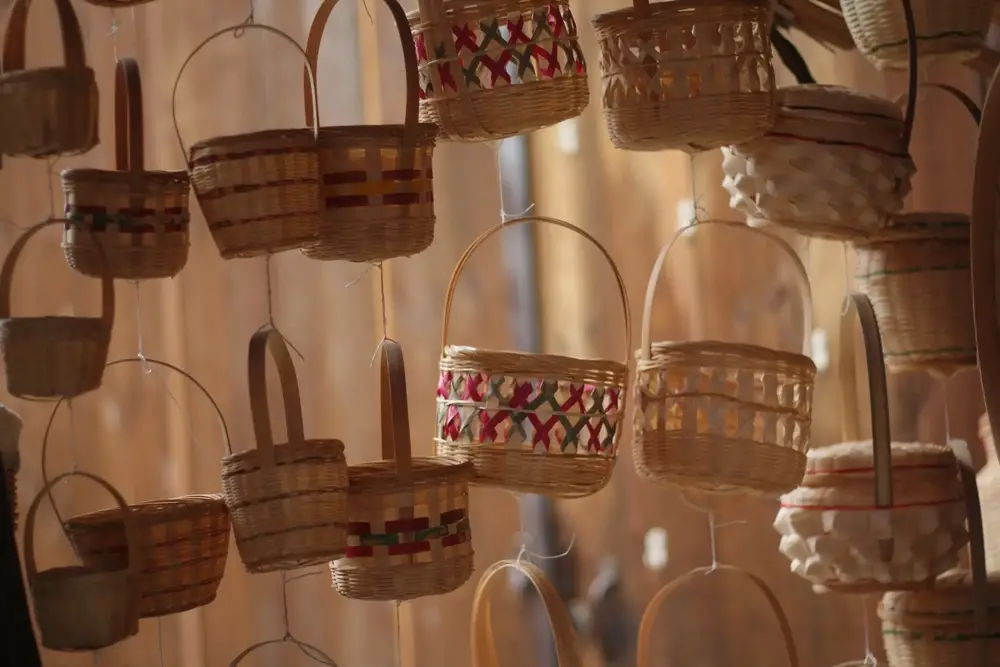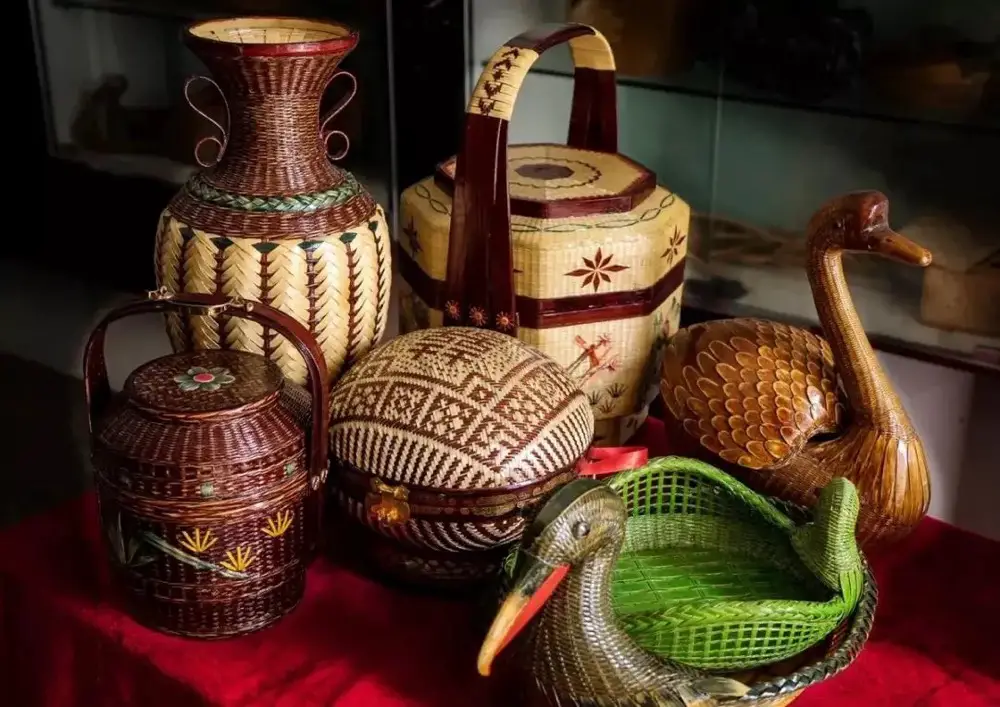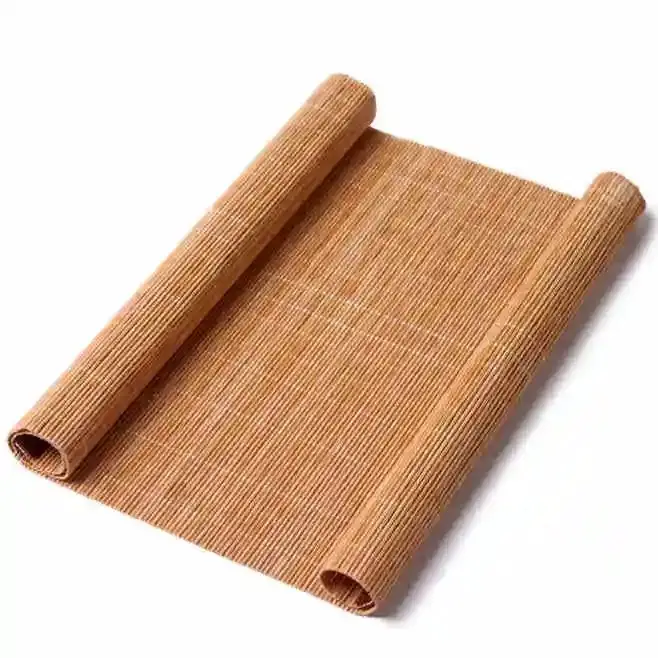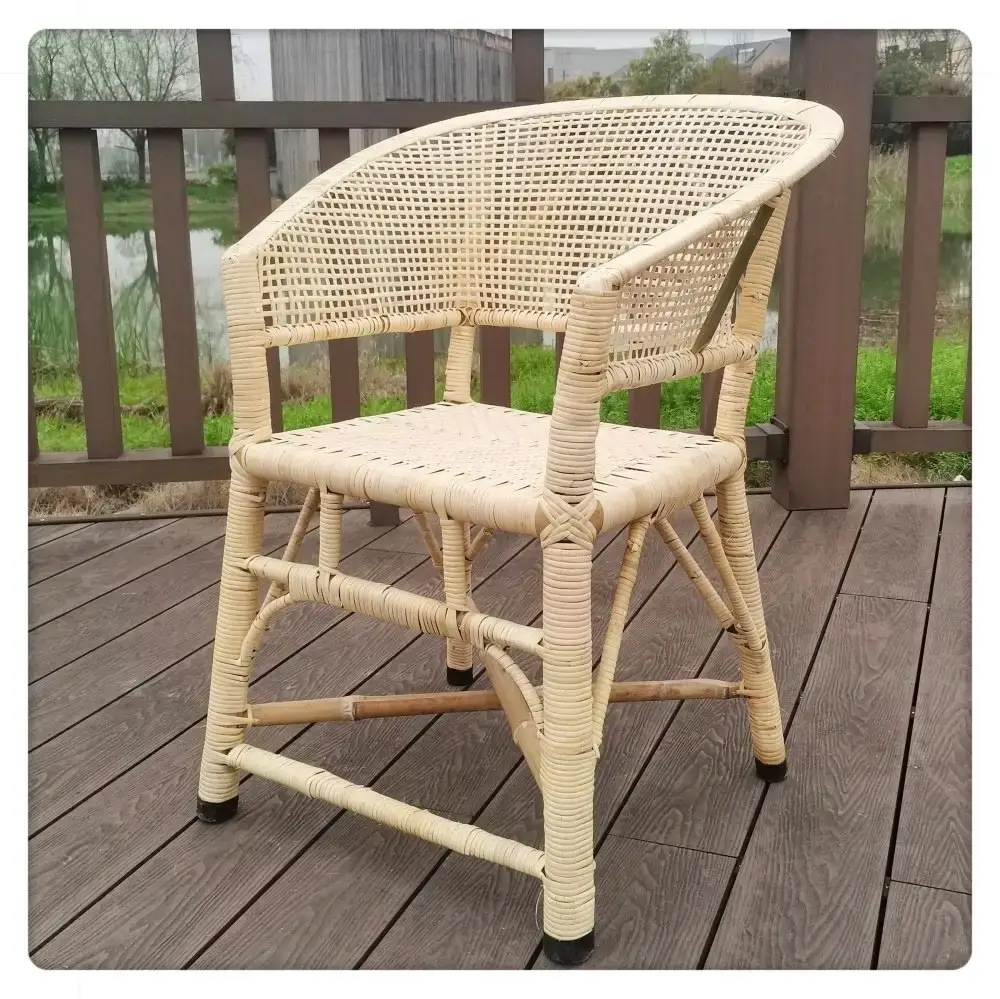Bamboo weaving is a craft that uses bamboo as the raw material. The craftsmen interlace bamboo strips into patterns using various weaving methods to form useful and decorative items.
What is bamboo weaving?

It is a craft that originated in China. It involves the use of bamboo to make a variety of traditional patterns and knits.
Bamboo weaving material
The raw bamboo weaving materials are hard but flexible.
| Bamboo Material | Characteristic | Use |
| Water bamboo | ToughHigh Strength,Pure colour | Weaving furniture |
| Cichlid bamboo | Variety of colour: Lime green when young, Yellow when mature | Making bed panels, sofas and cabinets |
| Nan bamboo | SmallThick-walledMore malleable | Weave panels |
Bamboo weaving history
Who invented bamboo weaving?

Bamboo weaving originated from necessity. Archaeological evidence shows that the Chinese people engaged in farming and animal keeping once they settled. When there was surplus, the Chinese people would store food and water. Local materials such as branches were used to make storage baskets. It was found that bamboo was tough, elastic, easily woven, neat and durable. As a result, the Chinese started using Bamboo as the main material to make utensils.
When did bamboo weaving start?
Bamboo weaving dates back to early periods of development. Woven bamboo products that were found at Hemudu cultural ruins with an age of over 7000 years confirm this. More than 200 bamboo woven products have been excavated in Yanliangchu Ruin and Hemudu ruin.
Many bamboo products, for example, boxes and bowls indicate that the bamboo weaving technique had improved significantly by the Warring States period.
New bamboo weaving techniques were applied to make more sophisticated products as time progressed.
The People’s Republic of China awards titles to accomplished people in the craft to preserve the bamboo weaving cultural history and skill. The government has also designated some regions and recognizes them for their long-standing history in the craft
Types of bamboo weaving
- Chinese bamboo weaving.
- Japanese bamboo weaving.
- Korean sokuri.
How to make bamboo weaving
- Cut a good length of the bamboo shaft from the main plantation.
- Scarp the bamboo with a knife to remove the green skin.
- Cut thin sections longitudinally from the shaft to produce pliable sections.
- Compare the sections to ensure they are of equal length and width.
- Allow the strips to dry for one week.
- The strips are then used to weave the product. This requires skill, experience and innovation.
What is the significance of bamboo in Chinese culture?

China is also referred to as the Kingdom of Bamboo with over 400 species.
Bamboo is a representation of virtue in Chinese culture. It represents loyalty, integrity, modesty and resistance.
The tree is also associated with people who carry a positive spirit.
It is also a symbol of elegance and loneliness.
Why bamboo weaving is declining

- The decline of raw materials caused by the clear-cutting of bamboo trees and insect borers that affect the bamboo stem.
- Availability of other options such as plastic which are cheaper and more durable than bamboo products.
- Bamboo workers are moving to other occupations due to the shrinkage of bamboo forest cover which has led to a shortage of raw materials.
Conclusion
Bamboo weaving is an important cultural heritage. In a world full of rapid development; the bamboo weaving craft has experienced a downfall. The Chinese government and bamboo weaving companies have combined efforts to revive this culture. As a result, bamboo weaving is now experiencing a rebirth. Craftsmen are at work to produce innovative weaving patterns and designs that meet modern aesthetic standards.